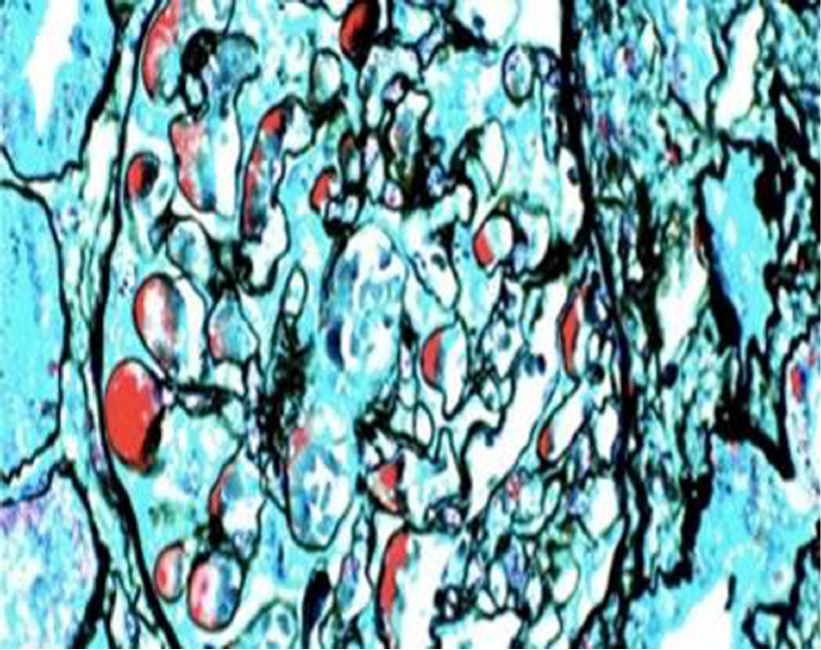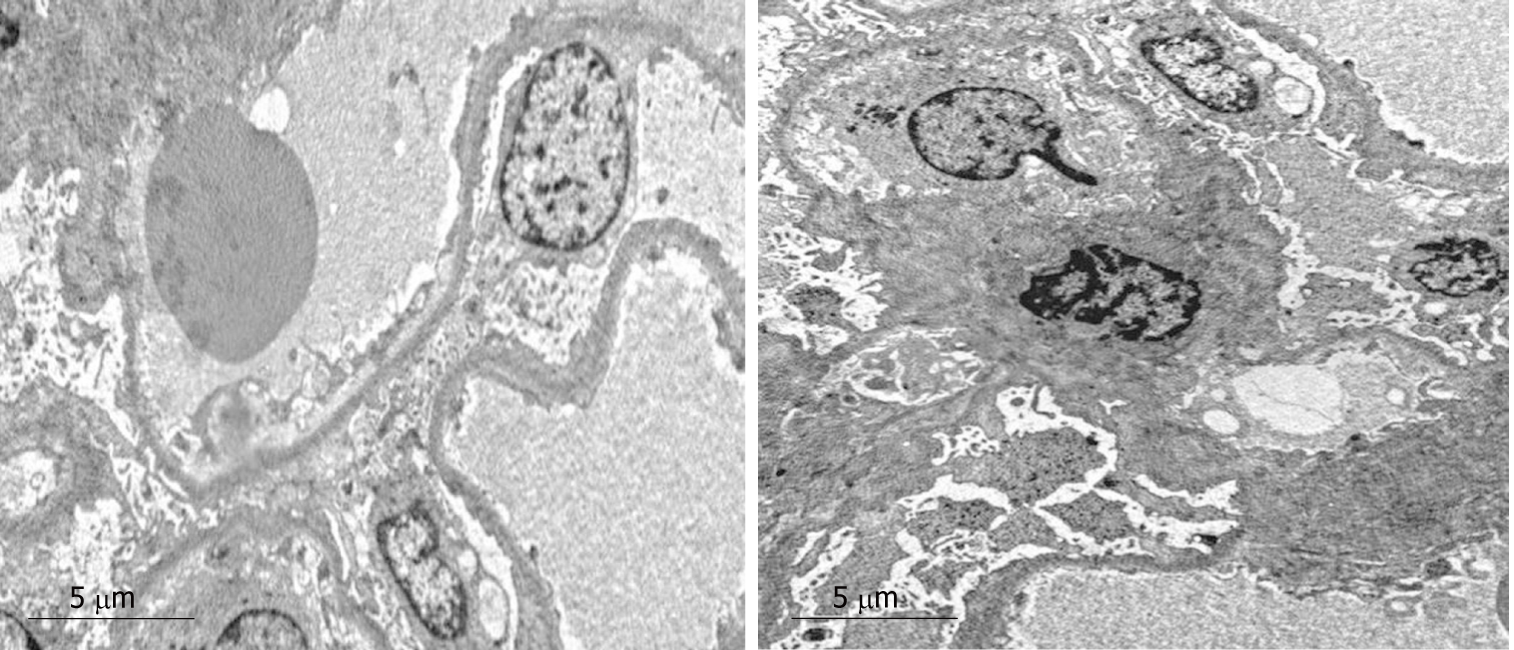Copyright
©The Author(s) 2019.
World J Clin Cases. Aug 26, 2019; 7(16): 2393-2400
Published online Aug 26, 2019. doi: 10.12998/wjcc.v7.i16.2393
Published online Aug 26, 2019. doi: 10.12998/wjcc.v7.i16.2393
Figure 1 Light microscopy.
The volume of residual glomeruli increased, the number of cells was 80-120 per glomerulus, mesangial cells and mesangial matrix were slightly increased, capillary loops were open, and the number of infiltrating cells was < 3 per glomeruli, mainly mononuclear cells. Red blood cells and “pseudothrombi” could be seen in several capillaries. One capillary loop was embedded into the urinary pole (HE staining; magnification, ×600).
Figure 2 Light microscopy.
Periodic Schiff-Methenamine (PASM) and Masson staining. Fuchsinophilic depositions were found in the basement membrane and under the endothelium. The tubulointerstitium exhibited moderate lesions, with acute lesions on chronic damage. There was diffuse turbidity and granular degeneration in the tubular epithelial cells. Partial tubular epithelial cells presented small and fine vacuolar degeneration, and the basement membrane of tubules became thicker. Brush border of the tubules was absent. Protein casts could be seen in some lumens. The renal interstitial region could be found to be focally enlarged, and fibrosis index was 1+. Individual arterioles presented segmental hyalinosis (PASM and Masson staining; magnification, ×400).
Figure 3 Electron microscopy.
Extensive effacement of podocyte foot processes, slight hyperplasia of mesangial matrix, and small amounts of electron dense depositions were observed in the mesangial area. Interstitial fibrosis of the kidney was obvious, and inflammatory cell infiltration was seen.
- Citation: Mwamunyi MJ, Zhu HY, Zhang C, Yuan YP, Yao LJ. Pseudothrombus deposition accompanied with minimal change nephrotic syndrome and chronic kidney disease in a patient with Waldenström's macroglobulinemia: A case report. World J Clin Cases 2019; 7(16): 2393-2400
- URL: https://www.wjgnet.com/2307-8960/full/v7/i16/2393.htm
- DOI: https://dx.doi.org/10.12998/wjcc.v7.i16.2393











